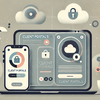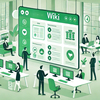
It’s hard to imagine our lives without the Internet here and now. It is our go-betweener in communicating with those far away; watching movies, listening to music, playing games on the web, and even reading technical documentation. Virtual reality absorbs us so much that it makes sense that such technologies as AR, VR, MR, and XR are emerging and developing at a fast rate. It is important to note that these new technologies come from various places, seeking to do different things. Let’s see the difference and find out what does AR have to do with technical writing.
AR, VR, MR, and XR – One Letter Variations
About twenty years ago, we called the Internet and everything taking place inside the computer a virtual realm. When the three-dimensional games started to emerge, we said that the virtual world is inside them. This definition is accurate enough. This refers to a Desktop-based reality, i.e., the virtual world generated by a computer. Present-day VR is either a full-scale dive into a virtual reality using the VR goggles or VR headset or interaction with the artificial and “true-life” realities (MR, XR, AR) with external gadgets. So what’s the difference then:
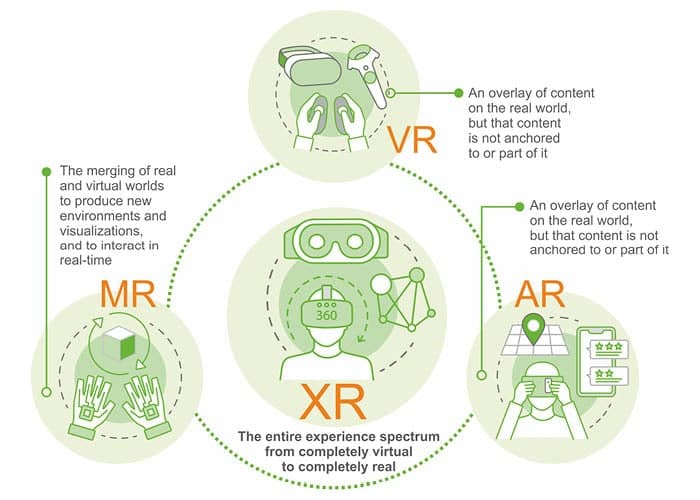
Virtual reality (VR) implies a complete immersion experience that shuts out the physical world. Using VR devices, users can be transported into a number of real-world and imagined environments such as the middle of a squawking penguin colony or even the back of a dragon.
Augmented reality (AR) adds digital elements to a live view, often by using the camera on a smartphone. It’s simpler than VR and doesn’t require such complex software and hardware in most cases.
In a Mixed Reality (MR) experience, which combines elements of both AR and VR, real-world and digital objects interact. MR should be multilayered – virtual and real worlds are to be handled by a computer simultaneously in addition a processor creates the third (mixed) world.
Extended Reality (XR) is an umbrella term that covers all of the various technologies that enhance our senses, whether they’re providing additional information about the actual world or creating totally unreal, simulated worlds for us to experience.
Fun fact: Researchers from Northwestern University have developed a prototype device that aims to put touch within VR’s reach, using a flexible material fitted with tiny vibrating components that can be attached to the skin. The system, known as epidermal VR (tactile virtual reality*) could be useful in other cases as well, from a child touching a display relaying the gesture to a family member located elsewhere, to helping people with amputations renew their sense of touch. In gaming, it could alert players when a strike occurs on the corresponding body part of the game character.
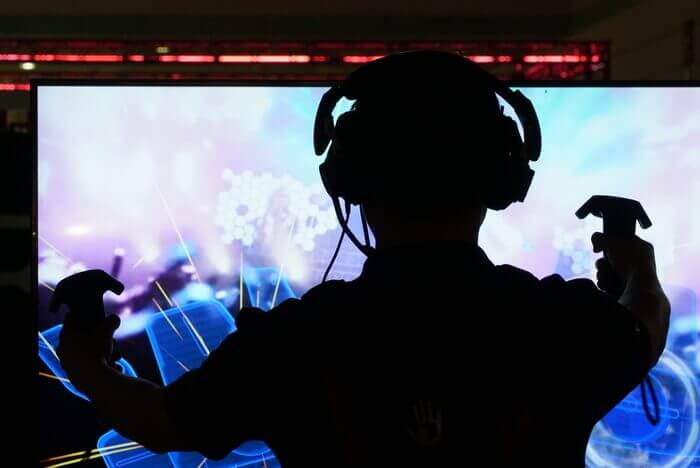
*VR Tactile is a haptic digital architectural environment that combines physical materiality with digital information to create a multi-sensory, interactive experience.
Ok, so we sliced and diced the notions. But what’s the applicational significance (besides having fun) of VR and AR?
Fields of VR Application
VR is typically used in the entertainment business or for educational, industrial purposes, and in the following fields:
Aviation. A flight simulator is an excellent example. Virtual aircraft are no easier to fly than real ones, and entry-level pilots gain qualified experience and knowledge without risking their health and expensive equipment.
Science. Scientists apply artificial simulations to model hypothetical situations, predict events according to physics, chemistry, or biology, and study certain phenomena. In this case, virtual reality is as close as possible to the real world; at least, its laws approximately copy the real world’s laws.
Medicine. VR is used to train doctors. Virtual reality allows doctors to practice before working with actual patients. VR turned out to be particularly useful for surgeons – they learn to perform surgeries. Inside virtual reality, they get valuable tips that cannot be obtained in other conditions (without software and a screen).
Education. Siemens uses VR to educate its employees. The company has oil platforms where it is difficult and dangerous to work. With virtual reality, employees learn to solve drilling rig systems’ most common problems in a safe environment. Besides, VR allows the employee to psychologically prepare for the oil fields’ environment and working conditions.
Design. Future design engineers are also trained using VR. Virtual reality allows them to see an object from a three-dimensional perspective and explore it from all sides. The engineers can upload their projects to VR and see the approximate results before projects are implemented.
Construction. VR is used at production sites for work planning and preventing malfunctions and accidents. Gabler uses VR headsets to investigate various stages of production (conveyors) for possible hazards to employees. VR improves speed and efficiency through workflow upgrades.
Criminalistics. Experts from the University of Zurich have come up with a non-typical application for VR. With artificial reality, they examined crimes: recreated the scene of events and the actions of people associated with the offense. It is more convenient to study the circumstances of a crime in simulation than on paper.
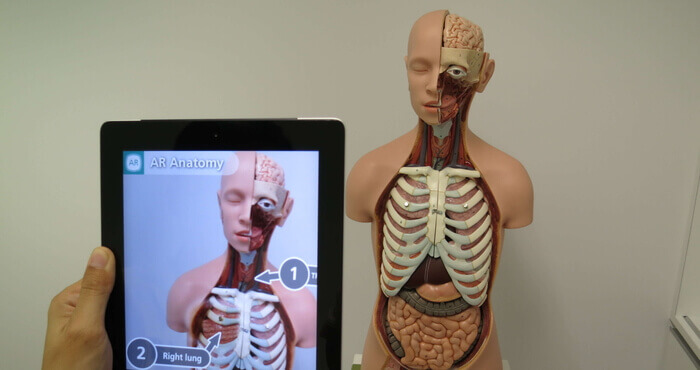
Fields of AR Application
Augmented reality is applied in the following areas:
Architecture. A building or other object design can be visualized “on the fly” and immediately get an approximate result of how the finished building will look like in reality.
Education. AR can replace notes or computers. Students can improve the digestibility of the material due to AR’s visualization technique. For example, in teaching astronomy students. With AR, students can get an interactive 3D image of space bodies, or, for example, the solar system. There are applications with which you can navigate the constellations. The camera is aimed at the night sky, and the software automatically draws up full-fledged constellation maps and indicates the names of celestial bodies.
Interior Design. Computer software and modeling programs were used to create a concept and a layout of an interior. Working with such tools demanded skills and took time. With AR, you can quickly imagine what a room will look like with certain design solutions. This is useful for both the designer and the customer.
Machinery. Even as you are reading this article, AR headsets are used to work with complex mechanisms. We are talking about any equipment, including industrial equipment. AR helps vehicle mechanics find and fix a problem in a car in advanced machine shops. Both software with algorithms or artificial intelligence, as well as IoT (Internet of Things), can be applied, i.e. the headset is connected to the vehicle’s equipment.
Remote work. Another promising trend is remote work (but that’s more of a Mixed reality trend). Employees can “go to work” without leaving home. Their interaction will not differ from real-life communication. Teams can be international, but the need for knowledge of foreign languages is decreasing – the speech is translated in real-time by a computer. Such reality can also help organize a collaborative workspace to share ideas and results.
And last but not least – technical writing. Augmented reality is transforming the world of technical communication. While the physical world is three-dimensional, the technical information is provided separately from the physical equipment on papers or 2D screens. The gap between the real and digital worlds hinders human abilities to acquire information and translate it into action effectively. AR fills this lack of overlaying virtual graphics and digital data on real objects around us. The work instructions are superimposed on the physical machines in exactly the right context in which technicians refer to the information. This dramatically impacts on quality and productivity of complex manufacturing procedures.
It’s easy to see Augmented reality: many educational and entertainment applications have already been created for smartphones. Such apps use a standard phone camera: the user directs the lens at the outside world, and the processor draws virtual objects.
Augmented Reality in Technical Writing
Instead of the conventional print and online formats, AR demands rich media content that can be published on smart devices. It calls for a different skillset and mindset. For example, in a classical environment, a technician typically flips through pages to identify relevant information. This information is then transferred to the place where the task must be executed. So, the technician has to interpret the written content and align existing graphics with real-world objects.
How about if we eliminated this transformation step by displaying the information at the point and place needed? How about if the information could adjust to the current context, where a user can start a task by him/herself and then request support from the application when he cannot continue based on his knowledge? That is when AR can help in technical communication. It serves as a context-sensitive help, because context help is a type of user documentation smart enough to deliver the right content at the right moment. And AR can add value to such help for the real-world objects.
There is an increasing requirement for standard design and service operations documents. However, there is a shortfall in standardization processes, impacting documentation. This gap presents an opportunity for technical communication. Content required for augmentation is a crucial part of the AR solution, and it demands certain conditions:
- Technical communicators’ ability with visual design and textual simplicity makes them crucial to the AR-based app development process. The focus should be on building a knowledge base and methodology to support AR in the same nourishing way as any other technical documentation deliverable.
- There is a need for a platform that enables mobile content management.
- The interface should provide an efficient publishing process for creating and publishing rich media content from any source, for example, web or smart devices supporting iOS and Android.
- Documentation can be channelized through Cloud and accessed from smart devices. The time-saving alternative (multi-channel publishing) is to use content authoring tools that feature mobile publishing.
- AR authoring tools are only in the early stages of development. Such tools will evolve based on users’ requirements and advice from experts. There are various reasons to branch into smart documentation, including new and creative prospects and measurable and lucrative work.
- Transferring contextual digital info into the work atmosphere has noticeable benefits for productivity and quality. As AR tools grow, the nature of the content will evolve as well, and we will proceed to a future that unites the digital and physical realities. Augmenting the physical reality with contextual info will change how people perceive human cognitive abilities.

Generating Content for AR
With Augmented reality, you virtually execute a task with the user. So, we need to take into account the user’s position, time, and issues and how the user can interact with AR. A new approach towards technical documentation is required: in AR, we do not explain but show. Due to the changes in the types of content and how we create it, we need to construct 3D and voice overlay. The users have to be led to the exact location and provided context-sensitive content. You write content to show a task versus explain the task. Before creating such content, ask yourself:
– What are the specific authoring tools you can use?
– How to work in a 3D view to define tasks?
– How to align 3D data with the real-world input?
You should remember what types of content should be created for AR in technical documentation:
- 3D overlay content (3D animation or 3D objects overlapping the real world with user interaction)
- Context-sensitive content (supplemental information with context-specific instructions)
- Voice/audio overlay
Today, many Augmented Reality solutions also use content that was already prepared for other purposes— pictures, documents, checklists, and so on. As the known proverb goes, “content is king.”
If the content is interactive, Augmented reality exponentially improves the usability of the content, especially when executing complex tasks, by bringing the content right in the user’s eyeshot.
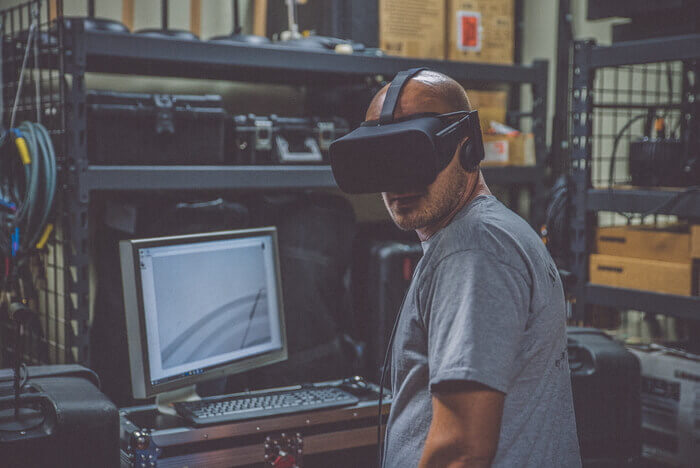
Conclusion
Augmented reality has had a great influence on technical documentation in recent years. It eliminates the need to transfer written content to the location where it needs to be applied. Implementing Augmented reality in technical documentation has varying levels of complexity in terms of content as well as the software that utilizes that content. As AR authoring tools evolve, the nature of content that is best suited will evolve. The cost of using this technology will evolve too and will eventually lead to a future that merges the physical and digital realities.
Good luck with your technical writing!
ClickHelp Team
Author, host and deliver documentation across platforms and devices

